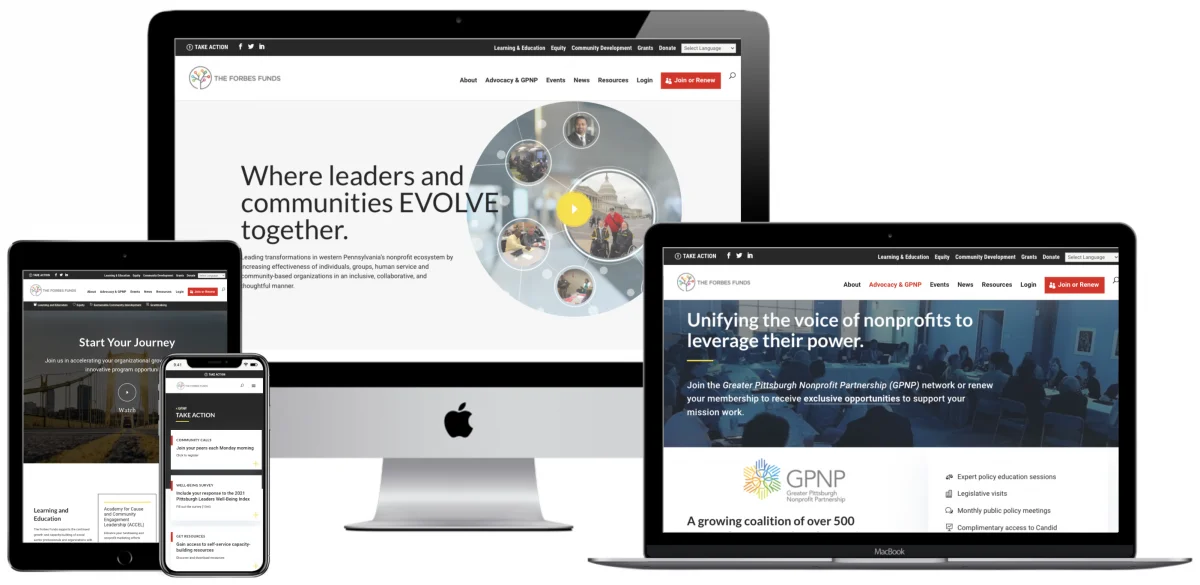The average lifespan of a well-designed and structured website is anywhere from three to seven years. The decision to redesign shouldn’t be taken lightly and shouldn’t be done on a whim to follow the latest trends. Redesigning and rebuilding your website to ensure it’s in top form can be the best investment you make; however, the bottom line is that redesigns and rebuilds are expensive. Let’s take a look at redesign vs rebuild: which is better value for money and which will get you long-term results.
Why should you update your website?
No matter what approach you take, you’ll need to update your website continually (it’s best to have a plan in mind) to keep it fresh and to ensure that your website generates leads and engagement. Is your website still working for you? Are you getting business? Is your business still growing? Do you have active engagement on your channels? If you answered no to any of these questions, you may need to consider redesigning or rebuilding.
What is a redesign?
A redesign can sometimes be likened to putting perfect icing on a cake that has collapsed (ever had the cake stick to the pan and you have to stick it back together with frosting?). Sure, before you cut into the cake, it looks lovely and edible, but if you dig deeper, you’ll uncover a minefield of issues with the cake.
A redesign may work on updating the content on the surface and the look of the site, but may ignore some of the deeper website issues that have to do with SEO or underlying code which affects user experience, bounce rate, time spent on pages, website speed and so much more.
Sometimes trying to fix those problems one by one is much more complicated (and, ultimately, more expensive) than simply rebuilding a website. If you think that what you really need is a redesign to keep you on-brand or update the look and feel of the site, then an agency can do a website health check and advise you from there.
What is a rebuild?
A website rebuild is starting from scratch, ensuring that the web build is done right the first time so that in future–should you need a new look and feel–you can redesign because your site has no underlying structural and coding issues.
A quality rebuild may include finding and upgrading your CMS or moving to a new platform, which will require migrating to a new platform and extensive technical work. If your old website wasn’t working for your needs you may need to have a technical rebuild which improves your eCommerce functionality, integrates marketing and automation functions, and so on. Any rebuild will ensure that the front-end rebuild has a responsive design for mobile.
Your website agency will also design pages with your on-page SEO, off-page SEO, and local SEO strategy in mind. They’ll also design to ensure you’re prepared for mobile-first, people-first/user-friendliness, AI-first, voice search, schema, and Google search journeys.
Why rebuild?
Here are some reasons to rebuild your website instead of simply redesigning.
- You want to stay competitive in the market.
Take a look at your key competitors. What do their websites look like? Do any of them look better than your site? Is it more user-friendly? Analyze your competition and think like a user who has never heard of your brand. Which website would you choose? Which business would you choose? Having a cutting-edge website is often a deciding factor, but also keep in mind that sometimes high-tech websites have slower site loading speed, so you have to strike a balance. - You want to have the latest web design to showcase your brand. Having a website stuck in the 90s shows people that either you’re drastically out of touch or your company hasn’t made a penny in years. A new website shows that you keep up with the latest trends (which is important depending on your industry) and that your company’s profits are healthy; you’re ready for new business and new customers. A great-looking website showcases your brand.
- You want your website to be easy to use and accessible for all types of users.
Those not in the business of web design often do not understand how varying types of users use websites and how some websites are simply not user-friendly. A website that doesn’t meet the needs of the users will lose traffic and lose leads. If you want your website to be easy to navigate, have the highest load speed, and look the part you need to analyze if your website is hitting the mark right now.
Websites have about four seconds to make an impression before users bounce. Your navigation should be intuitive. Uses should know what to do next. They should also know (without having to dig) what your company does (core services), how to find the information they need, where they are on the site, and where they want to go next. Further, if they land on a service or product page, is there a call to action to take them to the next step? Finally, can they easily use your site from a tablet or smartphone? If your buttons are too small or your lead-gen forms are glitchy, you’ve just lost a customer (or several).
If you think like a user and you cannot find what you want without knowing where it is, you most definitely need a redesign. Google will swipe your page from the SERP if you aren’t mobile-friendly and if you continually provide bad user experience, you won’t see page 1 anytime soon. - You have a new product or service to showcase.
You may have had a product or service overhaul or have found a new way to stay competitive in a changing market. But before you launch you realize that your old website and branding doesn’t fit with this new direction. If that’s the case, why not refresh and redesign? A redesign can align with new sales goals and provide a clear pathway for customers. - You’re updating your marketing efforts.
If you’re finally hitting 2019 and have decided to use a range of marketing tools, does your current website support all of the functionality you want? Do you have a way to optimize your pages for SEO? Do you have conversion-focused pages (thank you pages and landing pages)? Can you implement your content marketing, social media, compelling visuals, underlying technology, and marketing integration? If you don’t have the right foundation, you might not be able to keep up with the times. Your website needs clear SEO-friendly URL structures and tools to maximize keyword optimization. You need blog and news templates to make the most of content marketing with social media integration. You’ll also want conversion-focused product or service pages with clear CTAs. - You’re updating your technology and functionality behind the scenes.
If you’re an eCommerce site do you have the latest tools to support the kind of website structure needed to keep up? Do you have case studies on your pages? Do you have customizable quoting or specialist tools to engage customers when you’re offline? Sure, you can add plugins for many new technologies, but ensuring you have a website that has been rebuilt to accommodate these tools will mean your website is not subject to the whims of app developers nor will it be slowed down with scripts that don’t run smoothly.
If two or more of these reasons have you thinking, then you may consider a redesign.
How can Key Medium help?
We are an award-winning web design company, creating beautiful, bespoke websites with the added bonus of technical perfection underneath to run them. We aren’t just the frosting on the cake; we can ensure that your money is well-spent for years to come (so your website will last until the seven-year itch instead of just three!).
Still need help deciding? Check out some of our content on web design.
- UX Design and Branding
- Website Tutorials & Guides
- 6 Tips for Budgeting a Website Redesign and Retaining or Improving SEO

Elaine Frieman holds a Master’s Degree and is a UK-based professional editor, educational writer, and former marketing agency content writer where she wrote articles for disparate clients using SEO best practice. She enjoys reading, writing, walking in the countryside, traveling, spending time with other people’s cats, and going for afternoon tea.

